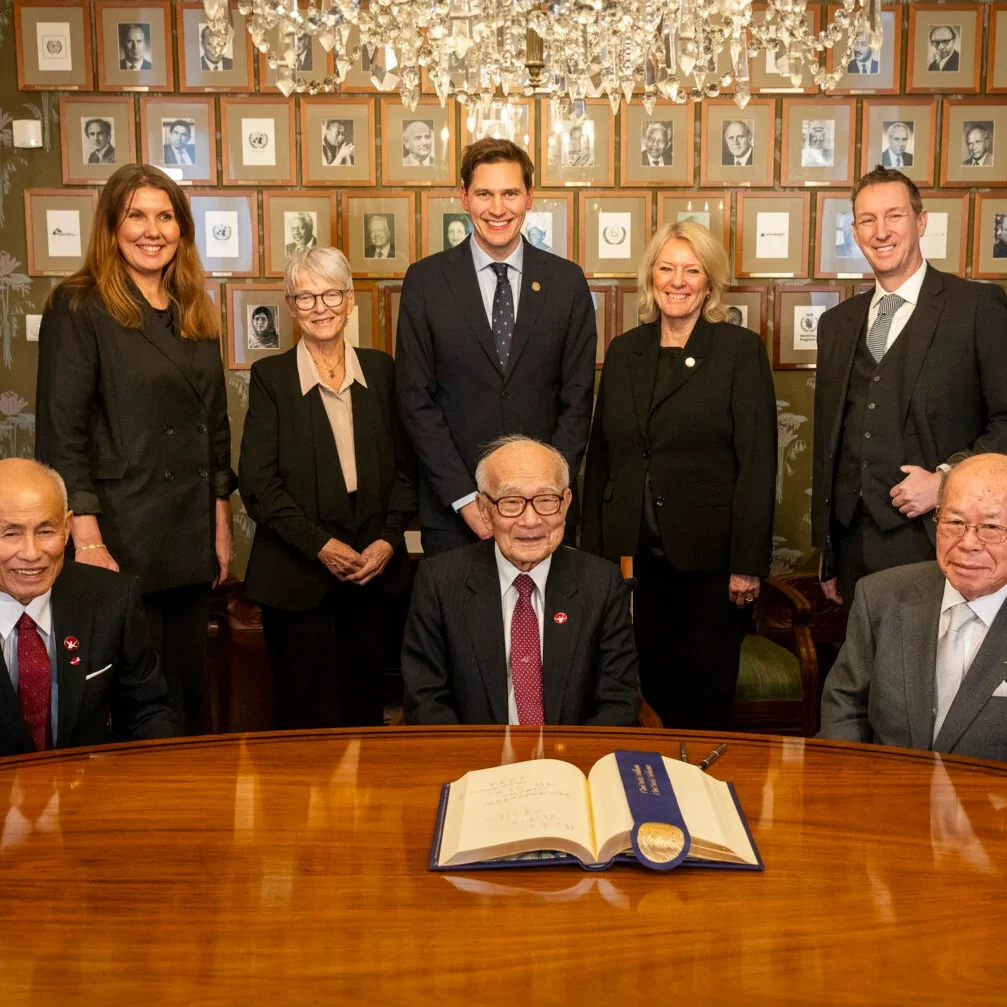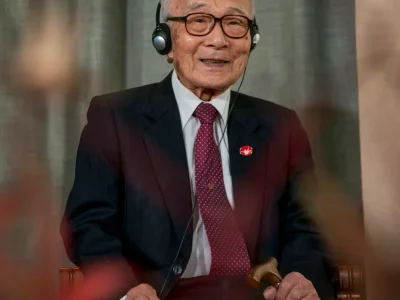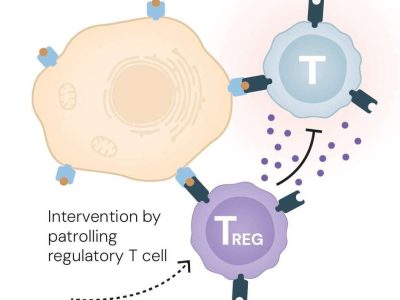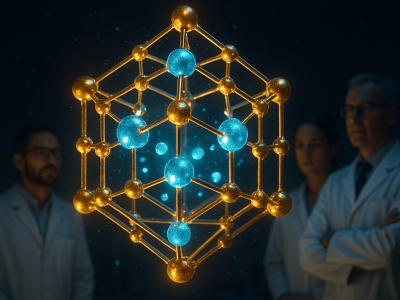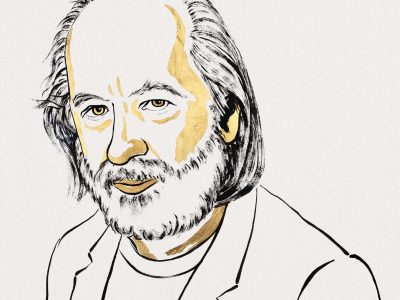The Nobel Peace Prize for 2024 has been awarded to Nihon Hidankyo, a Japanese organisation that has long advocated for a world free of nuclear weapons. The confederation, formed in 1956, represents the survivors of the atomic bombings of Hiroshima and Nagasaki. Through decades of testimony, activism, and diplomacy, it has played a pivotal role in strengthening the global opposition to nuclear warfare.
A recognition decades in the making
Since its founding, Nihon Hidankyo has sought justice for atomic bomb survivors, known as Hibakusha. These individuals endured not only the immediate devastation of the bombings but also long-term health effects, social discrimination, and political neglect. For years, the Japanese government resisted acknowledging their suffering, offering only limited medical support without formal compensation. Nihon Hidankyo has tirelessly fought to change that.
Their advocacy extends beyond Japan. Over the years, representatives have addressed the United Nations, attended global peace conferences, and contributed to disarmament negotiations. The organisation’s work helped lay the foundation for the Treaty on the Prohibition of Nuclear Weapons (TPNW), a landmark agreement adopted by 122 countries in 2017.
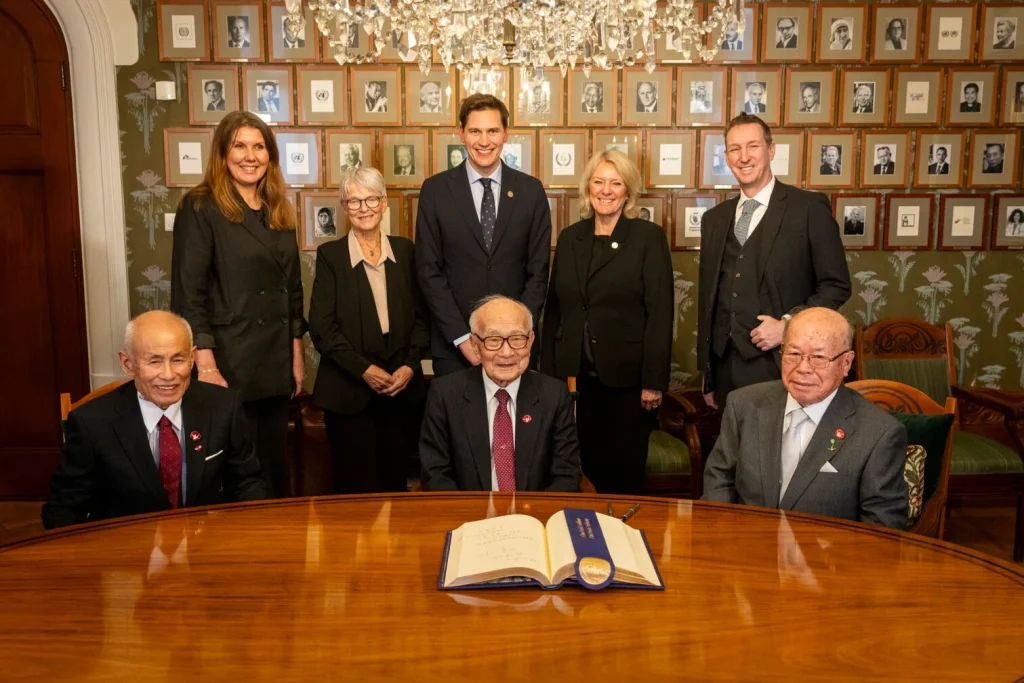
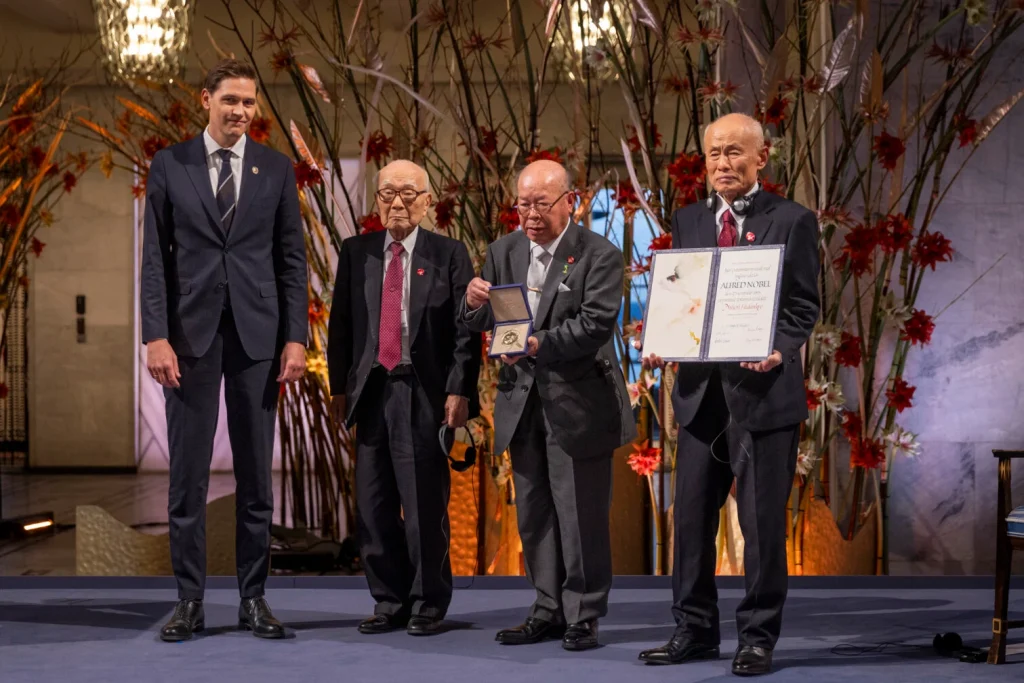
1. The road to Hiroshima and Nagasaki: Global political tensions and World War II
The atomic bombings of Hiroshima and Nagasaki did not occur in isolation. They were the culmination of years of geopolitical conflicts, military aggression, and scientific breakthroughs in nuclear technology. During the early 20th century, Japan emerged as an imperial power, expanding its influence across Asia. By the 1930s, Japan had invaded Manchuria and later waged war against China, committing atrocities such as the Nanjing Massacre. As Japan continued its military campaigns, tensions grew between Japan and Western nations, particularly the United States.
In response to Japan’s aggression, the US and its allies imposed economic sanctions, cutting off Japan’s access to critical resources such as oil and steel. Japan, seeing these measures as a threat to its national survival, launched a surprise attack on Pearl Harbor on December 7, 1941. This attack led the United States to formally enter World War II, transforming the conflict into a truly global war. The US, alongside Britain, the Soviet Union, and other Allied nations, sought to defeat the Axis powers, which included Japan, Germany, and Italy.
By mid-1945, the war had reached its final stages. Germany had surrendered in May, leaving Japan as the last Axis power still engaged in combat. The Pacific theatre had witnessed some of the most brutal battles of the war. The battles of Iwo Jima and Okinawa resulted in enormous casualties, demonstrating the fierce resistance of Japanese forces. US military leaders feared that a full-scale invasion of Japan’s home islands would result in even greater loss of life. Estimates suggested that such an invasion could cost hundreds of thousands of American and Japanese lives. As a result, the United States sought an alternative means to force Japan’s unconditional surrender.
1.1. The development of the atomic bomb
The idea of an atomic bomb had been in development for years. In 1938, German scientists discovered nuclear fission, the process by which an atom’s nucleus is split to release energy. This breakthrough laid the foundation for the creation of nuclear weapons. Fearing that Nazi Germany might develop such a weapon first, scientists in the US, including Albert Einstein and physicist J. Robert Oppenheimer, urged the American government to begin research into nuclear technology. This led to the creation of the Manhattan Project, a top-secret programme that brought together the world’s leading scientists to develop an atomic bomb.
The Manhattan Project, headquartered in Los Alamos, New Mexico, successfully tested the first atomic bomb on July 16, 1945, in the desert of New Mexico. The explosion demonstrated the weapon’s unprecedented destructive power. Shortly after, the US government decided to use the bomb against Japan in an effort to end the war quickly. The Soviet Union was preparing to declare war on Japan, and US leaders wanted to ensure Japan’s surrender before Soviet forces could establish a stronger presence in the region.
1.2. The bombings of Hiroshima and Nagasaki
On August 6, 1945, the US dropped the first atomic bomb, codenamed “Little Boy,” on the city of Hiroshima. The bomb exploded approximately 600 meters above the city, instantly killing an estimated 80,000 people. The intense heat from the explosion ignited massive fires, destroying nearly 70% of Hiroshima’s buildings. Many of those who survived the initial blast suffered severe burns, radiation poisoning, and other life-threatening injuries. Hospitals were overwhelmed, and medical personnel were unable to provide adequate care for the large number of wounded.
Three days later, on August 9, the US dropped a second bomb, codenamed “Fat Man,” on Nagasaki. The terrain of Nagasaki reduced the bomb’s impact slightly, but the devastation was still immense. Approximately 40,000 people were killed instantly, and thousands more perished in the following weeks due to burns, injuries, and radiation exposure. The combined death toll from the two bombings reached over 200,000 by the end of 1945.
Following the bombings, Japan’s Emperor Hirohito announced the country’s surrender on August 15, 1945. The formal surrender took place on September 2, bringing World War II to an end. The atomic bombings remain the only instance in history where nuclear weapons have been used in warfare, leaving a lasting impact on global politics, military strategy, and discussions on the ethics of nuclear warfare.
The devastation of Hiroshima and Nagasaki led to widespread condemnation of nuclear weapons. Scientists who had worked on the Manhattan Project, including Oppenheimer, began to question the morality of their creation. The bombings also triggered an international debate on the necessity of using such weapons and whether Japan might have surrendered without them. In the years that followed, these discussions influenced efforts to prevent future use of nuclear weapons, laying the groundwork for disarmament movements such as Nihon Hidankyo.
The atomic bombings of Hiroshima and Nagasaki did not occur in isolation. They were the culmination of years of geopolitical conflicts, military aggression, and scientific breakthroughs in nuclear technology. During World War II, Japan aligned itself with Germany and Italy, forming the Axis powers. The United States, along with Britain, France, and the Soviet Union, sought to counter their expansionist strategies.
By 1945, the war had entered its final stages. Germany had surrendered in May, and Japan was the last Axis power still fighting. The Pacific theatre had been marked by brutal battles, including the invasions of Iwo Jima and Okinawa, which resulted in heavy casualties on both sides. The US feared that a land invasion of Japan would lead to an even higher death toll. In an attempt to force Japan’s unconditional surrender, the US developed the Manhattan Project, which resulted in the creation of the first atomic bombs.
2. The humanitarian and environmental consequences
When the bomb detonated over Hiroshima, it released an immense burst of energy equivalent to 15 kilotons of TNT. The blast destroyed nearly 70% of the city’s buildings and killed tens of thousands instantly. A firestorm engulfed the area, while intense radiation exposure led to severe burns, internal injuries, and long-term illnesses. Nagasaki suffered a similar fate three days later. Many survivors later experienced chronic illnesses, including leukemia, cancer, and immune disorders, due to prolonged radiation exposure.
Beyond human suffering, the bombings also left lasting environmental damage. The intense heat incinerated everything within a radius of several kilometers. Radiation contaminated the soil and water, affecting plant and animal life for decades. Researchers studying the long-term effects of the bombings found evidence of genetic mutations among survivors and their descendants, raising ethical concerns about nuclear weapons’ use.
2.1. More survivor stories: Voices from Hiroshima and Nagasaki
Hibakusha, the survivors of the bombings, have played an instrumental role in ensuring that the world never forgets the consequences of nuclear warfare. Their testimonies illustrate not only the destruction of two cities but also the profound psychological and social struggles they endured.
Takashi Morita, a former soldier, was in Hiroshima when the bomb exploded. He described seeing people with skin peeling off their bodies, wandering the ruins in confusion. Decades later, he continued to suffer from radiation-induced illnesses. Despite his deteriorating health, he devoted his life to advocating for nuclear disarmament. He once said, “I have seen firsthand what nuclear war does to people. If humanity forgets, it will happen again.”
Another survivor, Setsuko Thurlow, was 13 years old when she saw her classmates buried under the rubble of a collapsed building. She became a global advocate, addressing world leaders at the United Nations and helping push forward nuclear disarmament treaties. She recalled, “I remember stepping over bodies as I fled the ruins. The cries of those trapped under fallen buildings haunt me to this day.”
The experiences of doctors treating the wounded also provide insight into the scale of devastation. Dr. Shuntaro Hida treated thousands of survivors, many of whom displayed symptoms that were not understood at the time. The medical community had no prior knowledge of radiation sickness, making treatment difficult and often ineffective. Dr. Hida described his frustration: “We were doctors, yet we had no answers. We watched our patients die, powerless to stop their suffering.”
2.2. The long struggle with radiation sickness and discrimination
Beyond the immediate destruction, many Hibakusha suffered from long-term illnesses caused by radiation exposure. Common conditions included leukemia, cancers, cataracts, and weakened immune systems. Some survivors also gave birth to children with severe health conditions, leading to a widespread fear of genetic damage.
Radiation sickness was not only a medical condition but also a source of social stigma. Many survivors faced discrimination in employment and marriage. Prospective employers often refused to hire Hibakusha due to concerns that they would frequently fall ill. Similarly, many survivors found it difficult to marry as people feared that their children might be affected by radiation-related health issues.
One survivor, Keiko Ogura, recalled how difficult it was to find work after the war. Employers viewed survivors as weak and likely to die young. She hid her status as a Hibakusha for years, fearing rejection from society. It was only later in life that she began to speak publicly about her experiences, determined to raise awareness of the lasting impact of nuclear weapons. She stated, “For years, I kept my past a secret. But silence allows history to repeat itself.”
2.3. The resilience of student survivors
Many of those affected by the bombings were children who lost their families, homes, and access to education. Despite these challenges, some survivors persevered and went on to rebuild their lives.
One such individual was Sunao Tsuboi, who was a 20-year-old student when the bomb exploded over Hiroshima. He suffered severe burns and was barely able to move for weeks. Against all odds, he recovered and later became a professor. He spent his life advocating for peace, working with international groups to ban nuclear weapons. He once told students, “Pain should not be the legacy we pass down. Instead, we must leave behind a world without war.”
The Hiroshima Maidens were another example of resilience. This group of young women, badly disfigured by burns, received reconstructive surgery in the United States in the 1950s. Despite their physical pain and social stigma, they worked to spread awareness of the horrors of nuclear war. One of them, Toyoko Morita, expressed her gratitude after receiving treatment: “They healed my body, but my heart still carries the memories of that terrible day.”
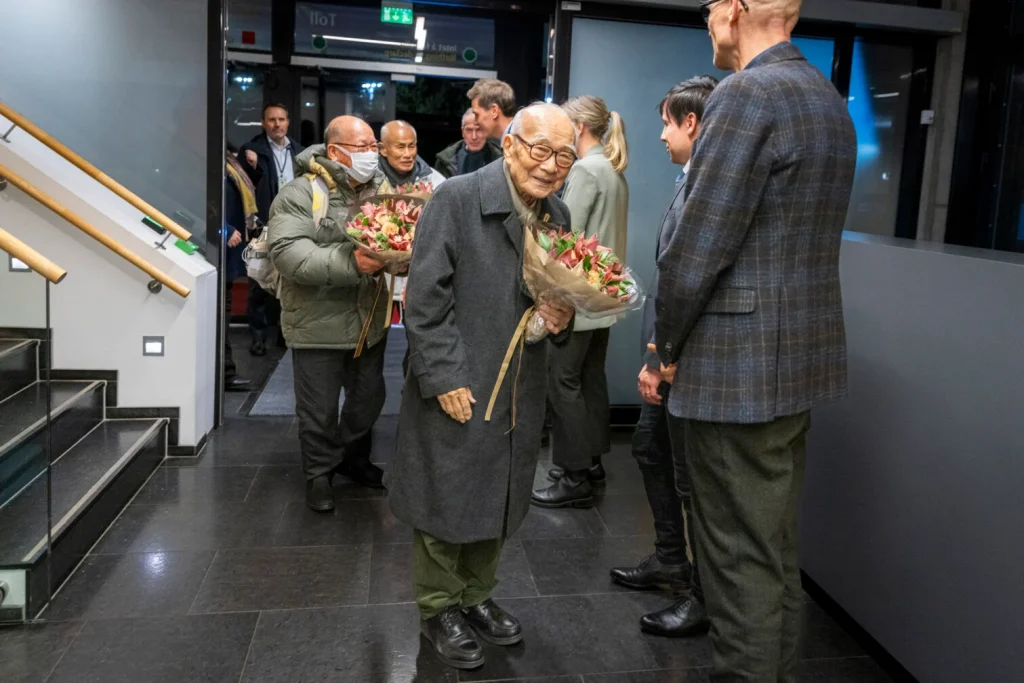
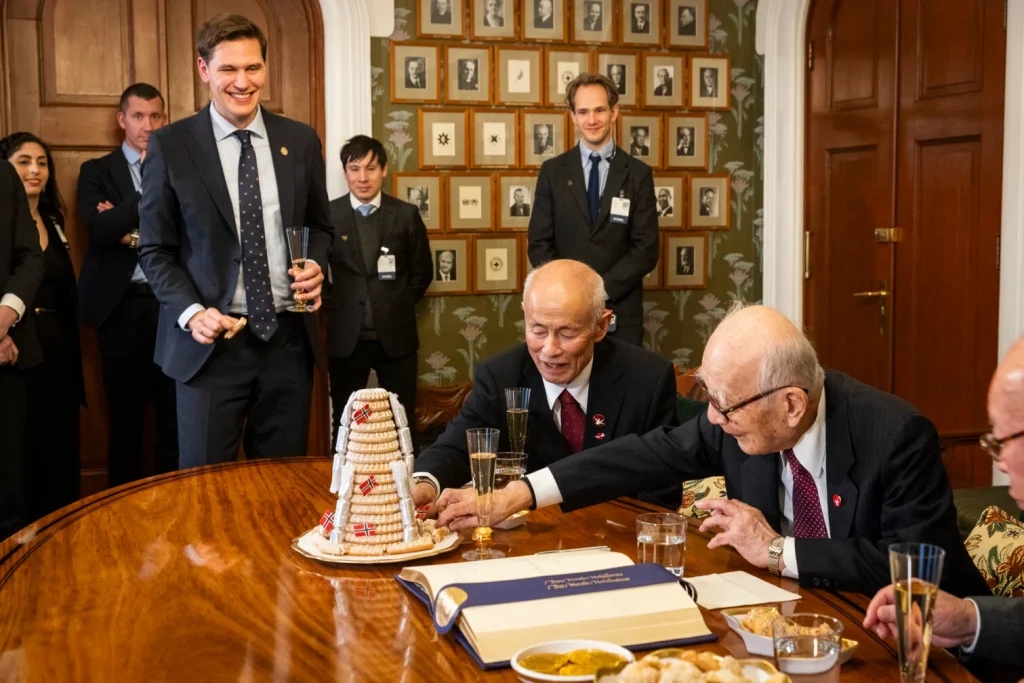
2.4. Doctors and workers: The untold stories
The bombings did not spare medical professionals, many of whom were killed while tending to the wounded. Those who survived struggled to provide care in unimaginable conditions.
Dr. Michihiko Hachiya was working at a hospital in Hiroshima when the bomb exploded. Despite his own injuries, he continued treating patients, documenting their suffering in a detailed diary that was later published as Hiroshima Diary. His accounts remain one of the most important records of the medical aftermath of the bombings. He once reflected, “As doctors, we were trained to save lives, yet we were surrounded by death at every turn.”
Factory workers and laborers also faced devastating consequences. Many were on their way to work when the bombs fell, leaving them severely injured and unable to continue their jobs. The loss of thousands of workers also crippled Hiroshima and Nagasaki’s economies, prolonging the suffering of those who survived.
The voices of Hibakusha from all walks of life reveal the full scale of suffering caused by the atomic bombings. Their experiences serve as a reminder of the need for nuclear disarmament and the lasting impact of war on civilians.
Hibakusha, the survivors of the bombings, have played an instrumental role in ensuring that the world never forgets the consequences of nuclear warfare. Their testimonies illustrate not only the destruction of two cities but also the profound psychological and social struggles they endured.
Takashi Morita, a former soldier, was in Hiroshima when the bomb exploded. He described seeing people with skin peeling off their bodies, wandering the ruins in confusion. Decades later, he continued to suffer from radiation-induced illnesses. Despite his deteriorating health, he devoted his life to advocating for nuclear disarmament.
Another survivor, Setsuko Thurlow, was 13 years old when she saw her classmates buried under the rubble of a collapsed building. She became a global advocate, addressing world leaders at the United Nations and helping push forward nuclear disarmament treaties.
The experiences of doctors treating the wounded also provide insight into the scale of devastation. Dr. Shuntaro Hida treated thousands of survivors, many of whom displayed symptoms that were not understood at the time. The medical community had no prior knowledge of radiation sickness, making treatment difficult and often ineffective.
The voices of Hibakusha from all walks of life reveal the full scale of suffering caused by the atomic bombings. Their experiences serve as a reminder of the need for nuclear disarmament and the lasting impact of war on civilians.
Hibakusha, the survivors of the bombings, have played an instrumental role in ensuring that the world never forgets the consequences of nuclear warfare. Their testimonies illustrate not only the destruction of two cities but also the profound psychological and social struggles they endured.
Takashi Morita, a former soldier, was in Hiroshima when the bomb exploded. He described seeing people with skin peeling off their bodies, wandering the ruins in confusion. Decades later, he continued to suffer from radiation-induced illnesses. Despite his deteriorating health, he devoted his life to advocating for nuclear disarmament.
Another survivor, Setsuko Thurlow, was 13 years old when she saw her classmates buried under the rubble of a collapsed building. She became a global advocate, addressing world leaders at the United Nations and helping push forward nuclear disarmament treaties.
The experiences of doctors treating the wounded also provide insight into the scale of devastation. Dr. Shuntaro Hida treated thousands of survivors, many of whom displayed symptoms that were not understood at the time. The medical community had no prior knowledge of radiation sickness, making treatment difficult and often ineffective.
3. The science of nuclear destruction
To understand the catastrophic effects of nuclear weapons, it is important to examine their scientific principles. Atomic bombs rely on nuclear fission, where the splitting of uranium or plutonium atoms releases massive amounts of energy. This energy manifests in several destructive forms: the initial blast wave, extreme heat, radiation exposure, and lingering radioactive fallout.
Radiation exposure has long-term effects on human health. Ionising radiation damages cells and DNA, increasing the risk of cancer and other diseases. Many Hibakusha developed acute radiation sickness in the weeks following the bombings, experiencing symptoms like vomiting, hair loss, and organ failure. Others suffered from genetic mutations, leading to birth defects in subsequent generations.
4. Nihon Hidankyo’s activism: A timeline of change
Nihon Hidankyo’s journey began in 1956 when survivors of the atomic bombings came together to form a collective voice. Their goal was clear: to seek recognition, medical support, and justice for Hibakusha, while advocating for a world free of nuclear weapons. The initial years were challenging, as many survivors faced government neglect and social discrimination. However, the group persisted, determined to make their voices heard.
One of the first milestones in their activism came in 1957 when the Japanese government passed the Atomic Bomb Victims Medical Care Law. This law provided limited healthcare benefits to survivors, but it fell short of providing full compensation or addressing the long-term consequences of radiation exposure. Nihon Hidankyo continued to press for better treatment, resulting in the passage of the Atomic Bomb Survivors Support Law in 1994, which expanded welfare assistance to Hibakusha and acknowledged the state’s responsibility toward them.
4.1. Advocating on the global stage
Beyond Japan, Nihon Hidankyo played a crucial role in shaping international discussions on nuclear disarmament. The organisation consistently sent representatives to the United Nations to share testimonies from survivors. These firsthand accounts of suffering helped shift global attitudes toward nuclear weapons and provided moral weight to disarmament negotiations.
In 1974, Nihon Hidankyo organized the first World Conference Against Atomic and Hydrogen Bombs in Hiroshima and Nagasaki. The event gathered anti-nuclear activists, political leaders, and scientists from around the world, fostering a global movement against nuclear proliferation. Over the decades, the conference became an annual event, strengthening alliances between disarmament advocates worldwide.
During the Cold War, when nuclear arms races between the US and the Soviet Union heightened global tensions, Nihon Hidankyo actively campaigned against nuclear testing. In the 1980s, the organisation contributed to the growing momentum that led to treaties limiting nuclear weapons, such as the Intermediate-Range Nuclear Forces Treaty signed in 1987. Their advocacy reinforced the idea that nuclear weapons were not only military tools but existential threats to humanity.
4.2. Influencing policies and public opinion
Nihon Hidankyo’s influence extended beyond lobbying governments. By partnering with academics, artists, and filmmakers, they ensured that the stories of Hibakusha reached broader audiences. Documentaries such as Hiroshima Nagasaki August 1945 and books written by survivors gained international attention, keeping the reality of nuclear war in public consciousness.
One of the organisation’s most significant achievements was its role in the adoption of the Treaty on the Prohibition of Nuclear Weapons (TPNW) in 2017. Nihon Hidankyo’s relentless advocacy, including campaigns like the “Appeal of the Hibakusha,” which gathered millions of signatures worldwide, helped push for this landmark treaty. The treaty, adopted by 122 nations, was the first legally binding agreement to comprehensively prohibit nuclear weapons.
4.3. Contributing to Japan’s post-war recovery and peace movements
Apart from its focus on nuclear disarmament, Nihon Hidankyo played a role in Japan’s broader post-war recovery. Survivors were not just victims but also active participants in rebuilding their communities. Many Hibakusha who became educators, doctors, and scientists used their experiences to contribute positively to Japanese society.
In the decades following the war, Nihon Hidankyo worked alongside other peace organisations to embed pacifism into Japan’s national identity. Their activism influenced Article 9 of Japan’s post-war constitution, which renounces war and the maintenance of military forces. This clause has been a cornerstone of Japan’s foreign policy, reinforcing its stance as a nation committed to peace.
Nihon Hidankyo also collaborated with schools to integrate the history of Hiroshima and Nagasaki into educational curricula. Survivors frequently gave lectures to students, ensuring that future generations understood the devastating consequences of nuclear war. The group initiated peace museums and memorial sites that now attract millions of visitors each year, fostering a culture of remembrance and learning.
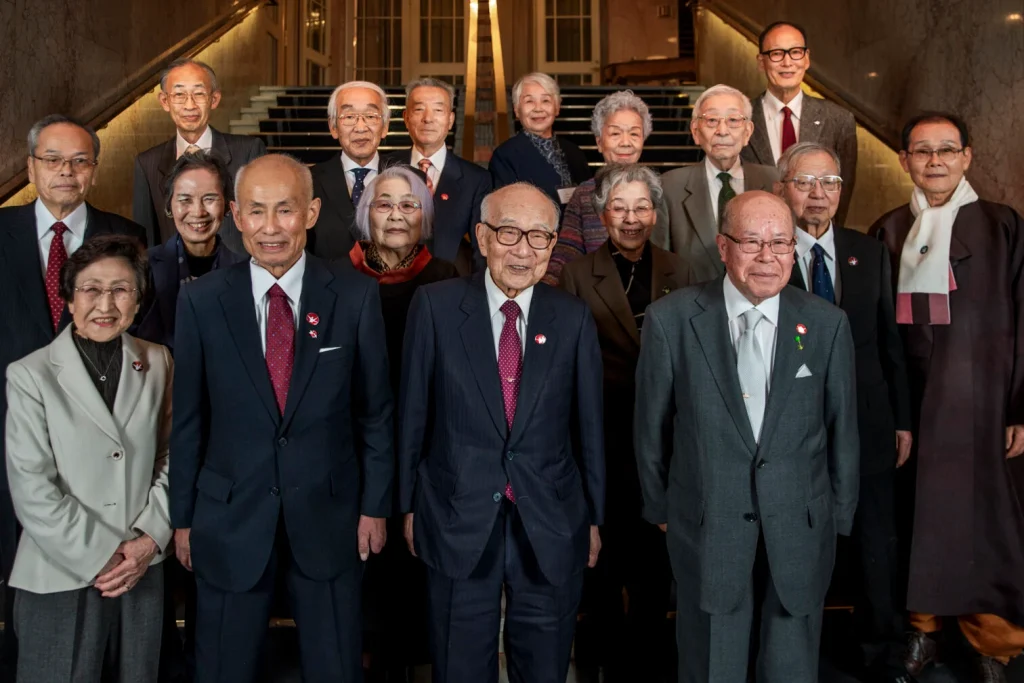

4.4. The ongoing fight for nuclear disarmament
While Nihon Hidankyo has made remarkable progress, their fight is far from over. The organisation continues to advocate for global nuclear disarmament, as nuclear stockpiles remain a pressing issue. As geopolitical tensions rise, Hibakusha and their supporters worry that the lessons of Hiroshima and Nagasaki may be forgotten.
Today, as survivors age, Nihon Hidankyo focuses on passing the torch to younger generations. Training programs for young activists and international peace exchanges have become vital components of their strategy to ensure that their message endures. In recent years, Hibakusha testimonies have been preserved through digital archives and multimedia projects, allowing their stories to reach a global audience even after they are gone.
The awarding of the Nobel Peace Prize in 2024 to Nihon Hidankyo underscores the importance of their mission. It is a testament to decades of resilience, perseverance, and commitment to a world without nuclear weapons. The world must now decide: will it heed the warnings of the Hibakusha, or will it continue down a path of nuclear uncertainty?
In the years following the bombings, many Hibakusha struggled in silence, facing discrimination and government neglect. Nihon Hidankyo emerged as a unifying force in 1956, bringing survivors together to demand recognition and support.
In 1957, the Japanese government passed the Atomic Bomb Victims Medical Care Law, which provided limited healthcare benefits to survivors. Over the decades, Nihon Hidankyo lobbied for additional support, resulting in expanded healthcare coverage and welfare assistance.
In the 1980s and 1990s, Nihon Hidankyo played a critical role in international efforts to curb nuclear proliferation. Representatives attended UN disarmament conferences, sharing survivor testimonies with global policymakers. They also participated in negotiations leading to the Treaty on the Non-Proliferation of Nuclear Weapons (NPT) and later supported the establishment of the Treaty on the Prohibition of Nuclear Weapons (TPNW).
The role of nuclear weapons today remains a contentious issue in international relations. While some nations consider them essential for national security and deterrence, others argue that their existence poses an existential threat to humanity. The debate surrounding nuclear weapons has intensified in recent years, as global tensions continue to rise.
5. The role of nuclear weapons in modern geopolitics
In the post-Cold War era, nuclear weapons were thought to be a diminishing threat. However, their significance has resurged in global politics. The United States and Russia still possess the world’s largest nuclear arsenals, each holding thousands of warheads capable of global destruction. The US maintains that its nuclear capabilities deter aggression, while Russia has increasingly incorporated nuclear rhetoric into its strategic policies.
China, too, has been expanding its nuclear stockpile, aiming to enhance its strategic position. Unlike the US and Russia, which have had established nuclear deterrence strategies since the Cold War, China has only recently accelerated its nuclear weapons development. The expansion of China’s missile silos and the diversification of its nuclear delivery systems have raised concerns among Western powers.
In Europe, NATO’s nuclear policy remains a core element of its security strategy. The alliance argues that nuclear deterrence prevents large-scale conflicts. However, some NATO members, particularly Germany and the Netherlands, have voiced opposition to nuclear weapons on their soil, pushing for greater disarmament efforts within the alliance.
The ongoing conflict in Ukraine has further intensified the nuclear debate. Russia’s repeated threats to use nuclear weapons have underscored the risks of nuclear conflict, especially in an era where political tensions are high. The war in Ukraine has also led to discussions on whether nuclear deterrence is still effective in preventing large-scale conflicts or if it instead fuels global instability.
5.1 International treaties and nuclear disarmament efforts
Multiple international treaties and agreements have attempted to regulate nuclear weapons, but their effectiveness has been inconsistent. The Treaty on the Non-Proliferation of Nuclear Weapons (NPT), signed in 1968, is one of the most significant agreements aimed at preventing the spread of nuclear weapons. While the treaty has limited the number of nuclear-armed nations, it has not led to complete disarmament.
The Comprehensive Nuclear-Test-Ban Treaty (CTBT), adopted in 1996, sought to ban all nuclear test explosions. While many nations have signed and ratified the treaty, key nuclear states, including the US, China, and North Korea, have yet to ratify it, limiting its impact.
More recently, the Treaty on the Prohibition of Nuclear Weapons (TPNW), adopted in 2017, represents the most ambitious attempt to ban nuclear weapons entirely. However, major nuclear powers, including the US, Russia, and China, have refused to sign the treaty, arguing that it undermines their security policies. Despite this, TPNW has gained significant support from non-nuclear states and disarmament advocates, who see it as a crucial step toward global denuclearisation.
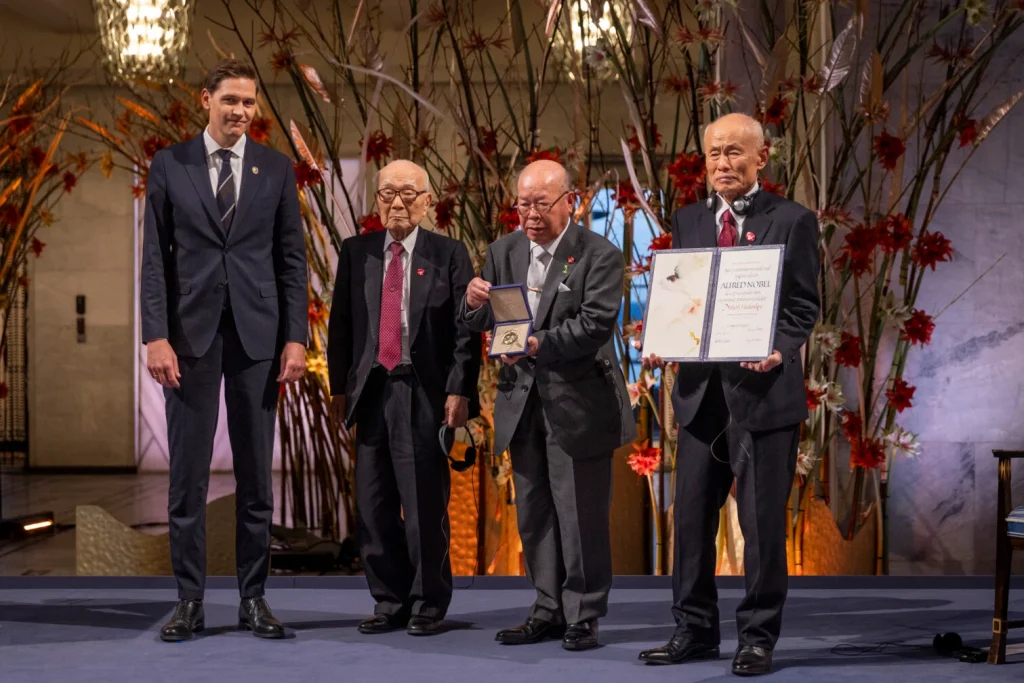
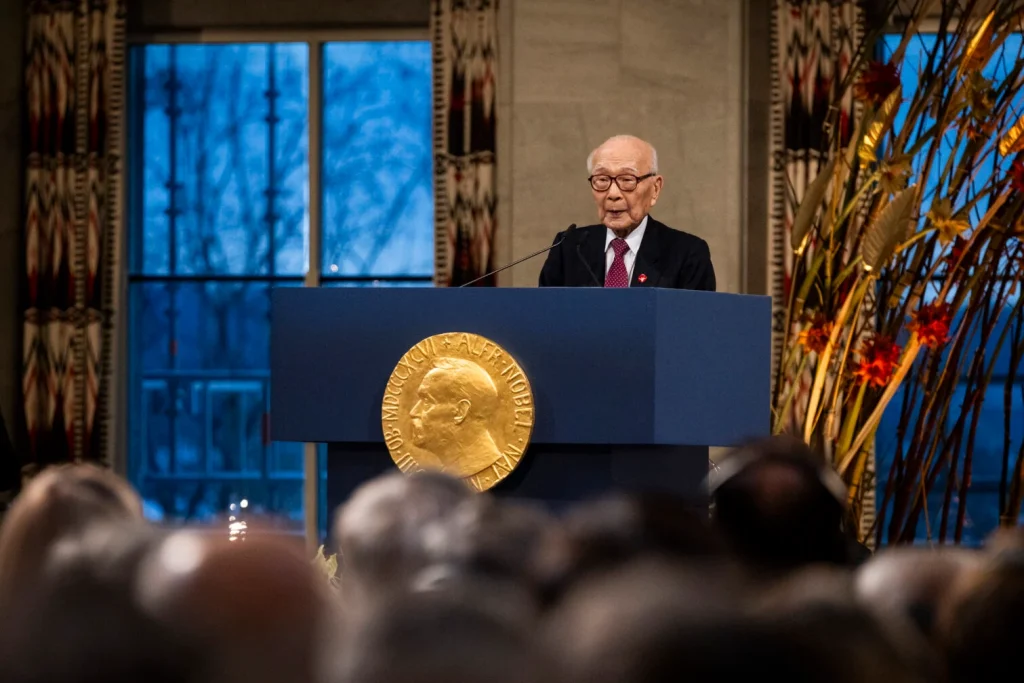
5.2 The challenges of nuclear disarmament: Realistic or idealistic?
The debate over nuclear disarmament often revolves around whether it is a realistic goal or an idealistic aspiration. Proponents of disarmament argue that eliminating nuclear weapons is the only way to ensure global security. They cite the catastrophic humanitarian consequences of nuclear warfare and argue that deterrence is an outdated concept in a world of asymmetric threats and cyber warfare.
However, critics contend that nuclear disarmament is unrealistic given current geopolitical tensions. The presence of nuclear weapons has, they argue, prevented large-scale conflicts since World War II. Some countries believe that as long as nuclear weapons exist, they must maintain their own arsenals to protect themselves.
One key example is North Korea, which views nuclear weapons as essential to its survival. Despite international sanctions and diplomatic pressure, Pyongyang has continued to develop its nuclear program, seeing it as a deterrent against potential US-led military action.
India and Pakistan provide another case study. Both nations have nuclear capabilities and maintain a delicate balance of power. Their historical conflicts over Kashmir and ongoing military tensions make nuclear deterrence a significant factor in regional stability.
5.3 The future of nuclear policy and disarmament efforts
Looking ahead, the future of nuclear disarmament remains uncertain. While global movements advocating for a nuclear-free world continue to grow, political realities suggest that complete disarmament will require significant diplomatic efforts and trust-building among nuclear-armed nations.
One of the most pressing concerns is the potential development of new nuclear technologies. Hypersonic missiles, artificial intelligence in nuclear command systems, and cyber threats all pose new risks that could escalate global instability. As technology evolves, the challenge of preventing nuclear conflicts becomes even more complex.
Despite these challenges, organisations like Nihon Hidankyo and international advocacy groups continue to push for disarmament. Their work highlights the humanitarian impact of nuclear weapons and keeps pressure on governments to reconsider their nuclear policies. Whether or not a nuclear-free world can be achieved, these efforts serve as a reminder of the devastating consequences of nuclear warfare and the importance of global cooperation in preventing future catastrophes.
Despite efforts to eliminate nuclear weapons, they remain a significant geopolitical issue. Nine countries currently possess nuclear arsenals, with the US and Russia holding the largest stockpiles. The risk of nuclear conflict remains a pressing concern, particularly in regions like the Korean Peninsula and the Middle East.
International treaties have sought to limit nuclear expansion, yet many nations have resisted full disarmament. Proponents argue that nuclear deterrence prevents wars, while critics warn that even a single miscalculation could lead to global catastrophe. Nihon Hidankyo continues to advocate for complete nuclear abolition, urging countries to ratify the TPNW.
5.4 Encouraging critical thinking and discussion
To engage students in discussions about nuclear weapons and peace efforts, educators can incorporate interactive activities. Some suggested exercises include:
- Researching a Hibakusha testimony and writing a reflection on its impact.
- Investigating how international treaties regulate nuclear weapons.
- Debating the pros and cons of nuclear deterrence as a global security policy.
- Creating awareness campaigns to educate communities about the dangers of nuclear proliferation.
The Nobel Peace Prize awarded to Nihon Hidankyo is not only a recognition of their decades-long activism but also a reminder that nuclear disarmament remains an urgent issue. The voices of the Hibakusha serve as a testament to human resilience, but they also present a challenge to the world. Will humanity continue to live under the shadow of nuclear weapons, or will it choose a path toward lasting peace?
Reference
Nihon Hidankyo – Nobel Prize lecture. NobelPrize.org. Nobel Prize Outreach 2025. Fri. 28 Feb 2025. https://www.nobelprize.org/prizes/peace/2024/nihon-hidankyo/lecture/

